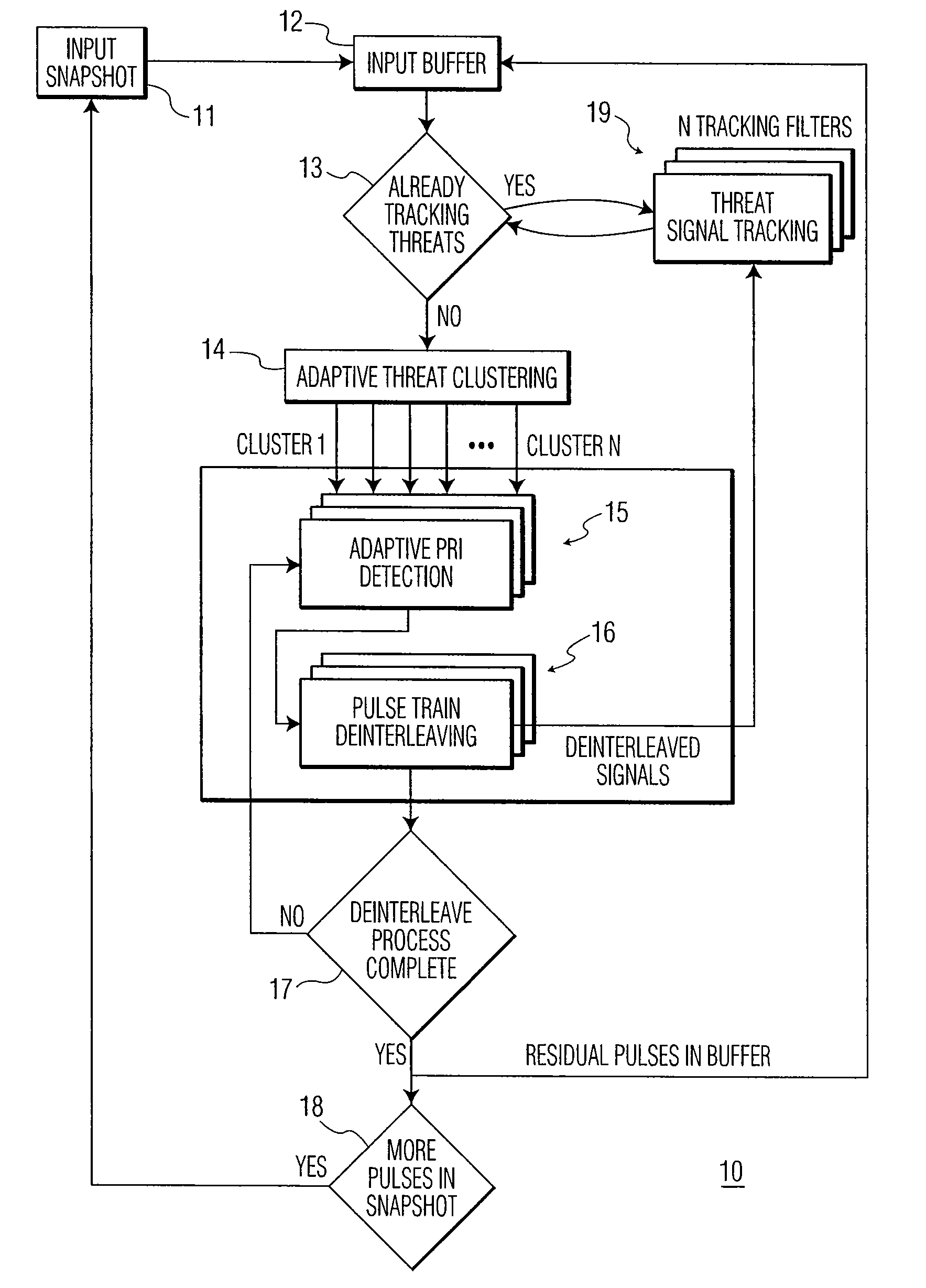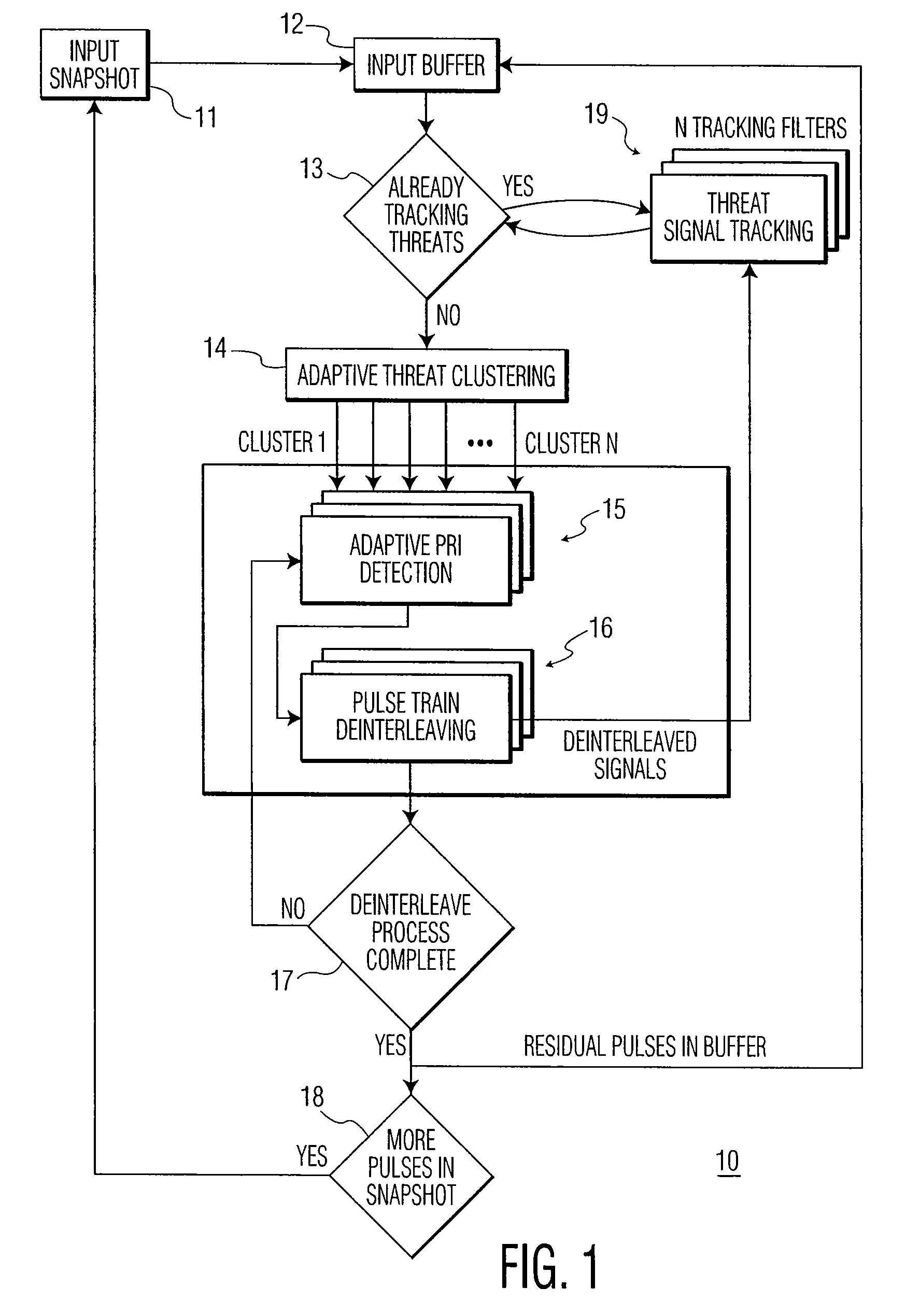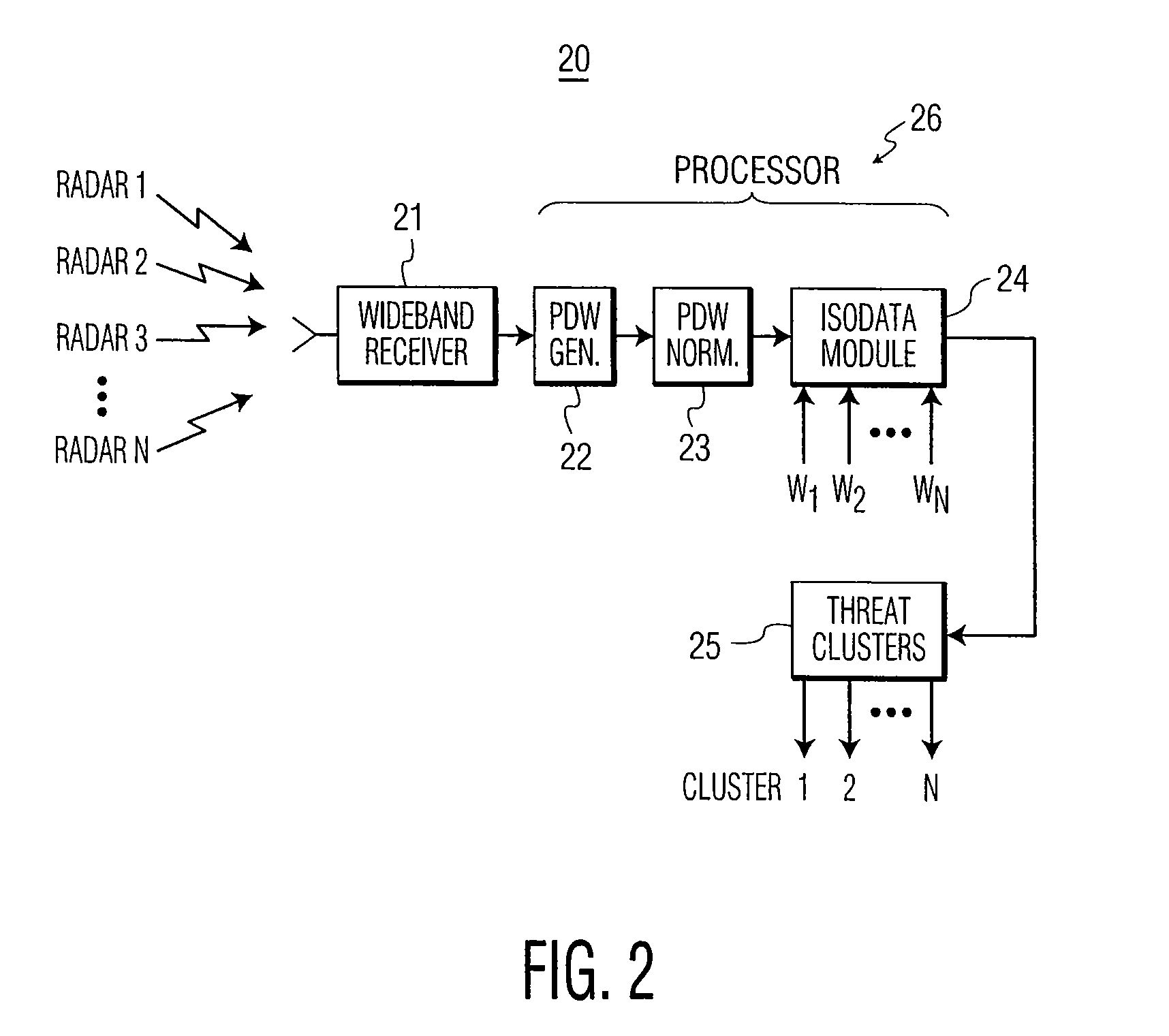System and method for detecting and de-interleaving radar emitters
a radar and emitter technology, applied in the field of radar identification, can solve the problems of aircraft not knowing whether, and the aircraft is not able to determin
- Summary
- Abstract
- Description
- Claims
- Application Information
AI Technical Summary
Problems solved by technology
Method used
Image
Examples
Embodiment Construction
[0027]The proliferation of radar threats agile in frequency (PRF) and / or pulse repetition interval (PRI) has placed an ever-increased burden on radar warning receiver (RWR) and electronic counter measures (ECM) systems to correctly intercept, identify and countermeasure these threats. As will be explained, the present invention performs threat clustering and pulse train de-interleaving of threat radars in various dense electronic warfare (EW) environments.
[0028]Referring to FIG. 1, there is shown a functional block diagram of a system for radar threat detection and pulse train de-interleaving, in accordance with an embodiment of the present invention. The radar detection and pulse train de-interleaving system, generally designated by 10, includes input snapshot module 11, input buffer module 12, adaptive threat clustering module 14, adaptive PRI detection module 15, pulse train de-interleaving module 16 and threat signal tracking module 19. These modules are described below.
[0029]In...
PUM
 Login to View More
Login to View More Abstract
Description
Claims
Application Information
 Login to View More
Login to View More - R&D
- Intellectual Property
- Life Sciences
- Materials
- Tech Scout
- Unparalleled Data Quality
- Higher Quality Content
- 60% Fewer Hallucinations
Browse by: Latest US Patents, China's latest patents, Technical Efficacy Thesaurus, Application Domain, Technology Topic, Popular Technical Reports.
© 2025 PatSnap. All rights reserved.Legal|Privacy policy|Modern Slavery Act Transparency Statement|Sitemap|About US| Contact US: help@patsnap.com



